A Smithsonian magazine special report

Would Astronauts Survive an Interstellar Trip Through a Wormhole?
Well, it depends on your definition of “wormhole” …
Victoria Jaggard
:focal(780x399:781x400)/https://tf-cmsv2-smithsonianmag-media.s3.amazonaws.com/filer/79/9d/799dd088-1f15-47f6-84f7-360496649d8e/interstellar-equations.jpg)
In the space opera Interstellar , astronauts seeking to save humanity have found a lifeline: a wormhole that has mysteriously appeared next to Saturn. The tunnel through spacetime leads to a distant galaxy and the chance to find habitable planets that humans can colonize. The movie's wormhole is based on real physics from retired CalTech professor Kip Thorne , an astrophysics pioneer who also helped Carl Sagan design his wormhole for the novel Contact . The visualizations are stunning and are being hailed as some of the most accurate simulations of wormholes and black holes in film. But there is one aspect of plunging into an interstellar express that the film doesn't address: How do you survive the trip?
Although they didn't call it such, the original wormhole was the brainchild of Albert Einstein and his assistant Nathan Rosen. They were trying to solve Einstein's equations for general relativity in a way that would ultimately lead to a purely mathematical model of the entire universe, including gravity and the particles that make up matter. Their attempt involved describing space as two geometric sheets connected by "bridges," which we perceive as particles.
Another physicist, Ludwig Flamm, had independently discovered such bridges in 1916 in his solution to Einstein's equations. Unfortunately for all of them, this "theory of everything" didn't work out, because the theoretical bridges did not ultimately behave like real particles. But Einstein and Rosen's 1935 paper popularized the concept of a tunnel through the fabric of spacetime and got other physicists thinking seriously about the implications.

Princeton physicist John Wheeler coined the term "wormhole" in the 1960s when he was exploring the models of Einstein-Rosen bridges. He noted that the bridges are akin to the holes that worms bore through apples. An ant crawling from one side of the apple to another can either plod all the way around its curved surface, or take a shortcut through the worm's tunnel. Now imagine our three-dimensional spacetime is the skin of an apple that curves around a higher dimension called "the bulk." An Einstein-Rosen bridge is a tunnel through the bulk that lets travelers take a fast lane between two points in space. It sounds strange, but it is a legit mathematical solution to general relativity.
Wheeler realized that the mouths of Einstein-Rosen bridges handily match descriptions of what's known as a Schwarzschild black hole , a simple sphere of matter so dense that not even light can escape its gravitational pull. Ah-ha! Astronomers believe that black holes exist and are formed when the cores of exceedingly massive stars collapse in on themselves. So could black holes also be wormholes and thus gateways to interstellar travel? Mathematically speaking, maybe—but no one would survive the trip.
In the Schwarzschild model, the dark heart of a black hole is a singularity, a neutral, unmoving sphere with infinite density. Wheeler calculated what would happen if a wormhole is born when two singularities in far-flung parts of the universe merge in the bulk, creating a tunnel between Schwarzschild black holes. He found that such a wormhole is inherently unstable: the tunnel forms, but then it contracts and pinches off, leaving you once more with just two singularities. This process of growth and contraction happens so fast that not even light makes it through the tunnel, and an astronaut trying to pass through would encounter a singularity. That's sudden death, as the immense gravitational forces would rip the traveler apart.
"Anything or anyone that attempts the trip will get destroyed in the pinch-off!" Thorne writes in his companion book to the movie, The Science of Interstellar .
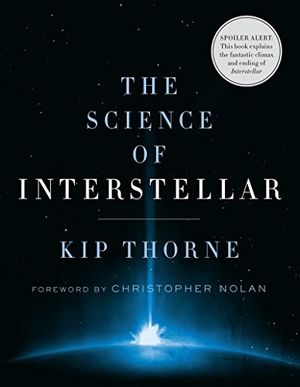
The Science of Interstellar
Amazon.com: The Science of Interstellar (9780393351378): Kip Thorne, Christopher Nolan: Books
There is an alternative: a rotating Kerr black hole, which is another possibility in general relativity. The singularity inside a Kerr black hole is a ring as opposed to a sphere, and some models suggest that a person could survive the trip if they pass neatly through the center of this ring like a basketball through a hoop. Thorne, however, has a number of objections to this notion. In a 1987 paper about travel via wormhole , he notes that the throat of a Kerr wormhole contains a region called a Cauchy horizon that is very unstable. The math says that as soon as anything, even light, tries to pass this horizon, the tunnel collapses. Even if the wormhole could somehow be stabilized, quantum theory tells us that the inside should be flooded with high-energy particles. Set foot in a Kerr wormhole, and you will be fried to a crisp.
The trick is that physics has yet to marry the classical rules of gravity with the quantum world, an elusive bit of mathematics that many researchers are trying to pin down. In one twist on the picture, Juan Maldacena at Princeton and Leonard Susskind at Stanford proposed that wormholes may be like the physical manifestations of entanglement, when quantum objects are linked no matter how far apart they are.
Einstein famously described entanglement as "spooky action at a distance" and resisted the notion. But plenty of experiments tell us that entanglement is real—it's already being used commercially to protect online communications, such as bank transactions. According to Maldacena and Susskind, large amounts on entanglement change the geometry of spacetime and can give rise to wormholes in the form of entangled black holes . But their version is no interstellar gateway.
"They are wormholes which do not allow you to travel faster than light," says Maldacena. "However, they can allow you to meet somebody inside, with the small caveat that they would both then die at a gravitational singularity."
OK, so black holes are a problem. What, then, can a wormhole possibly be? Avi Loeb at the Harvard-Smithsonian Center for Astrophysics says our options are wide open: "Since we do not yet have a theory that reliably unifies general relativity with quantum mechanics, we do not know of the entire zoo of possible spacetime structures that could accommodate wormholes."

There's still a hitch. Thorne found in his 1987 work that any type of wormhole that is consistent with general relativity will collapse unless it is propped open by what he calls "exotic matter" with negative energy. He argues that we have evidence of exotic matter thanks to experiments showing how quantum fluctuations in a vacuum seem to create negative pressure between two mirrors placed very close together. And Loeb thinks our observations of dark energy are further hints that exotic matter may exist.
"We observe that over recent cosmic history, galaxies have been running away from us at a speed that increases with time, as if they were acted upon by repulsive gravity," says Loeb. "This accelerated expansion of the universe can be explained if the universe is filled with a substance that has a negative pressure … just like the material needed to create a wormhole." Both physicists agree, though, that you'd need too much exotic matter for a wormhole to ever form naturally, and only a highly advanced civilization could ever hope to gather enough of the stuff to stabilize a wormhole.
But other physicists are not convinced. "I think that a stable, traversable wormhole would be very confusing and seems inconsistent with the laws of physics that we know," says Maldacena. Sabine Hossenfelder at the Nordic Institute for Theoretical Physics in Sweden is even more skeptical: "We have absolutely zero indication that this exists. Indeed it is widely believed that it cannot exist, for if it did the vacuum would be unstable." Even if exotic matter was available, traveling through it may not be pretty. The exact effects would depend on the curvature of spacetime around the wormhole and the density of the energy inside, she says. "It is pretty much as with black holes: too much tidal forces and you get ripped apart."
Despite his ties to the film, Thorne is also pessimistic that a traversable wormhole is even possible, much less survivable. "If they can exist, I doubt very much that they can form naturally in the astrophysical universe," he writes in the book. But Thorne appreciates that Christopher and Jonah Nolan, who wrote Interstellar , were so keen to tell a story that is grounded in science.
“The story is now essentially all Chris and Jonah's,” Thorne told Wired in an exclusive interview. “But the spirit of it, the goal of having a movie in which science is embedded in the fabric from the beginning—and it's great science—that was preserved.”
Get the latest Science stories in your inbox.
Victoria Jaggard | | READ MORE
Victoria Jaggard is the science editor for Smithsonian.com. Her writing has appeared in Chemical & Engineering News , National Geographic , New Scientist and elsewhere.
Interstellar
- Edit source
- View history
Interstellar is a 2014 Film that is directed by Christopher Nolan , Cinematography by Hoyte van Hoytema , Produced by Jordon Goldberg , Jake Myers , Christopher Nolan , Lynda Obst , Emma Thomas , Kip Thorne , Thomas Tull , Composed by Hans Zimmer and written by Christopher Nolan and Jonathan Nolan .
The film stars Matthew McConaughey , Anne Hathaway , Jessica Chastain , John Lithgow , Casey Affleck , David Oyelowo , Collette Wolfe , Francis X. McCarthy , Bill Irwin , Andrew Borba , David Gyasi , Wes Bentley , Topher Grace , William Devane and Michael Caine .
- 3.1 Main Cast
- 3.2 Supporting Cast
- 4.1 Posters
- 4.4 Trailers
- 5 Soundtrack
- 7 External links
Synopsis [ ]
A team of explorers travel through a wormhole in space in an attempt to ensure humanity's survival.
To be added.
Main Cast [ ]
- Matthew McConaughey as Joseph Cooper
- Anne Hathaway as Amelia Brand
- Ellen Burstyn as Murphy Cooper (older)
- Mackenzie Foy as Murphy Cooper (10 years old)
- John Lithgow as Donald
- Timothée Chalamet as Tom Cooper (15 years old)
- David Oyelowo as School Principal
- Collette Wolfe as Ms. Hanley
- Francis X. McCarthy as Boots
- Bill Irwin as TARS (voice)
- Andrew Borba as Smith
- Wes Bentley as Doyle
- David Gyasi as Romilly
- Topher Grace as Getty
- William Devane as Williams
- Michael Caine as Professor Brand
Supporting Cast [ ]
- Josh Stewart as CASE (voice)
- Leah Cairns as Lois
- William Dickinson as Coop
- Matt Damon as Hugh Mann
- Flora Nolan as Girl on Truck
- Griffen Fraser as Boy on Truck
- Jeff Hephner as Doctor
- Lena Georgas as Nurse Practitioner
- Elyes Gabel as Administrator
- Brooke Smith as Nurse
- Russ Fega as Crew Chief
Gallery [ ]
Posters [ ].
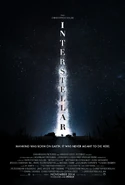
Trailers [ ]
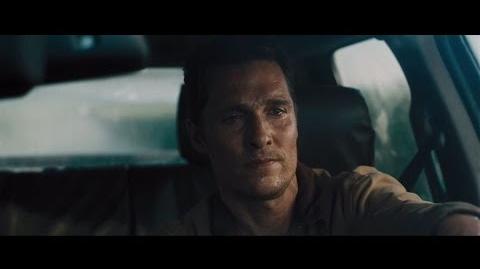
Soundtrack [ ]
External links [ ].
- 1 Miranda Tate
- 2 Freddy Borden
- 3 Sammy Jankis
We have completed maintenance on Astronomy.com and action may be required on your account. Learn More

- Login/Register
- Solar System
- Exotic Objects
- Upcoming Events
- Deep-Sky Objects
- Observing Basics
- Telescopes and Equipment
- Astrophotography
- Space Exploration
- Human Spaceflight
- Robotic Spaceflight
- The Magazine
What are wormholes? An astrophysicist explains these shortcuts through space-time
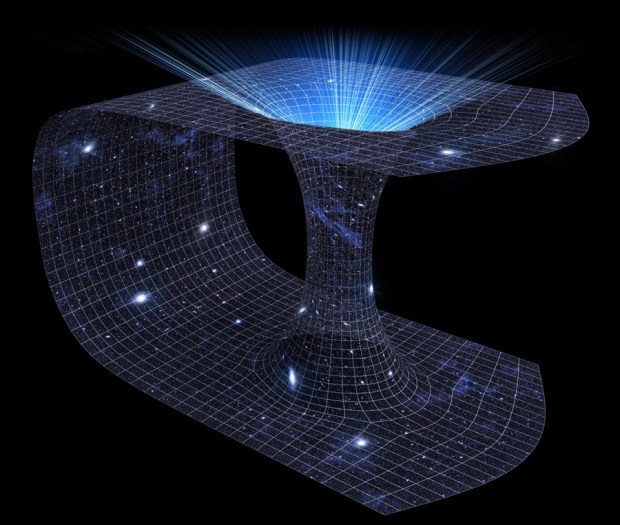
What are wormholes and do they exist? – Chinglembi D., age 12, Silchar, Assam, India
Imagine two towns on two opposite sides of a mountain. People from these towns would probably have to travel all the way around the mountain to visit one another. But, if they wanted to get there faster, they could dig a tunnel straight through the mountain to create a shortcut. That’s the idea behind a wormhole.
A wormhole is like a tunnel between two distant points in our universe that cuts the travel time from one point to the other. Instead of traveling for many millions of years from one galaxy to another, under the right conditions one could theoretically use a wormhole to cut the travel time down to hours or minutes.
Because wormholes represent shortcuts through space-time , they could even act like time machines. You might emerge from one end of a wormhole at a time earlier than when you entered its other end.
While scientists have no evidence that wormholes actually exist in our world, they’re good tools to help astrophysicists like me think about space and time. They may also answer age-old questions about what the universe looks like.
Fact or fiction?
Because of these interesting features, many science fiction writers use wormholes in novels and movies. However, scientists have been just as captivated by the idea of wormholes as writers have.
While researchers have never found a wormhole in our universe, scientists often see wormholes described in the solutions to important physics equations. Most prominently, the solutions to the equations behind Einstein’s theory of space-time and general relativity include wormholes. This theory describes the shape of the universe and how stars, planets and other objects move throughout it. Because Einstein’s theory has been tested many, many times and found to be correct every time , some scientists do expect wormholes to exist somewhere out in the universe.
But, other scientists think wormholes can’t possibly exist because they would be too unstable.
The constant pull of gravity affects every object in the universe, including Earth. So gravity would have an effect on wormholes, too. The scientists who are skeptical about wormholes believe that after a short time the middle of the wormhole would collapse under its own gravity , unless it had some force pushing outward from inside the wormhole to counteract that force. The most likely way it would do that is using what’s called “negative energies,” which would oppose gravity and stabilize the wormhole.
But as far as scientists know, negative energies can be created only in amounts much too small to counteract a wormhole’s own gravity. It’s possible that the Big Bang created teeny, tiny wormholes with small amounts of negative energies way back at the beginning of the universe, and over time these wormholes have stretched out as the universe has expanded.
Just like black holes?
While wormholes are interesting objects to think about, they still aren’t accepted in mainstream science. But that doesn’t mean they’re not real – black holes, which we astrophysicists know abound in our universe, weren’t accepted when scientists first suggested they existed, back in the 1910s.
Einstein first formulated his famous field equations in 1915, and German scientist Karl Schwarzschild found a way to mathematically describe black holes after only one year . However, this description was so peculiar that the leading scientists of that era refused to believe that black holes could actually exist in nature. It took people 50 years to start taking black holes seriously – the term “black hole” wasn’t even coined until 1967 .
The same could happen with wormholes. It may take scientists a little while to come up with a consensus about whether or not they can exist. But if they do find strong evidence pointing to the existence of wormholes – which they may be able to do by looking at odd movements in star orbits – the discovery will shape how scientists see and understand the universe.
Dejan Stojkovic , Professor of Physics, University at Buffalo
This article is republished from The Conversation under a Creative Commons license. Read the original article .

The most common planets in the universe might be rich in carbon

Why do pictures of Earth taken from the Moon show a black sky with no stars?

Webb discovers the earliest known galaxy — for now

2024 Full Moon calendar: Dates, times, types, and names
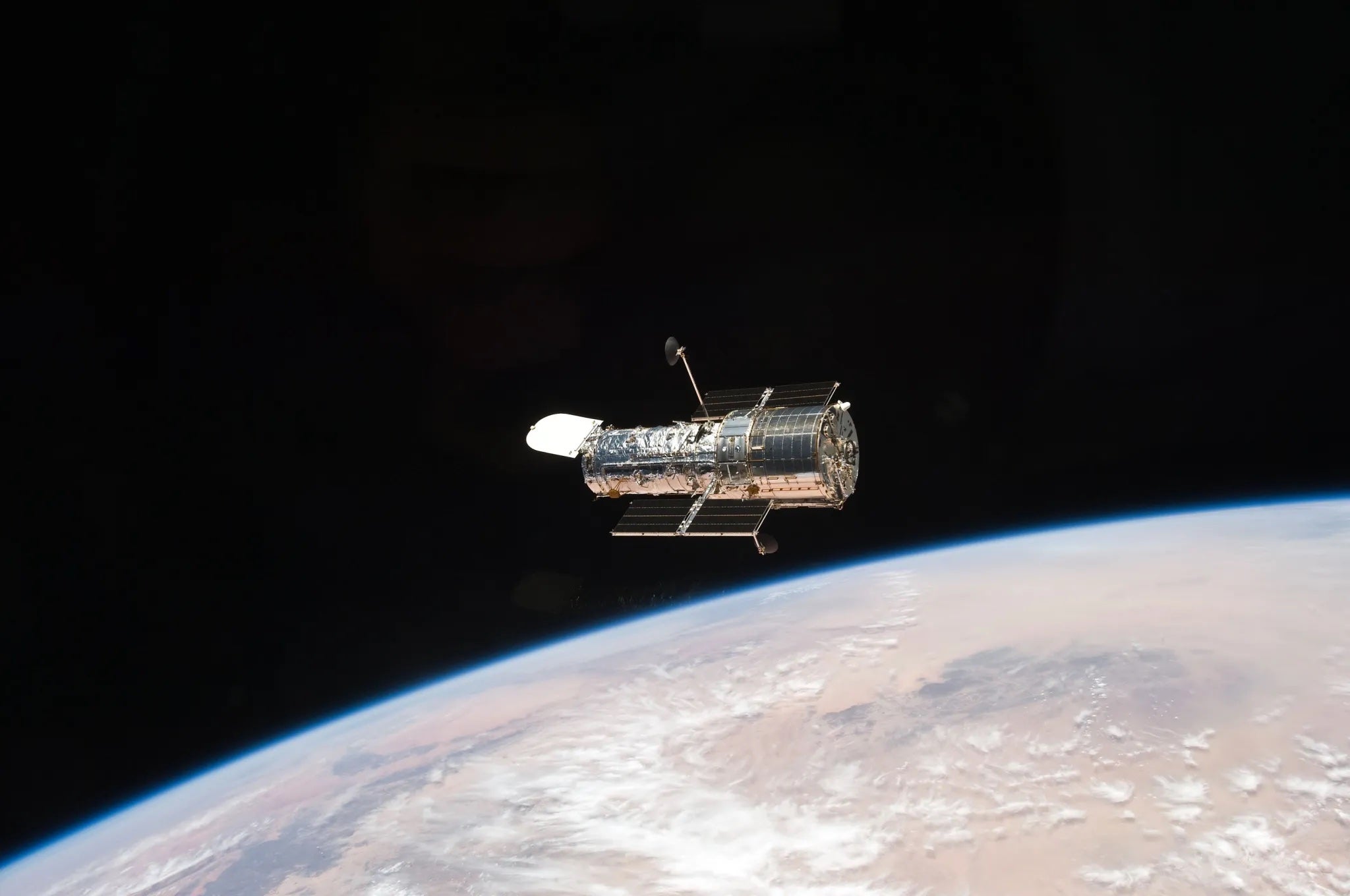
The aging Hubble Space Telescope is not finished quite yet

Hubble finds signature of water vapor in exoplanet GJ 9827d’s atmosphere

The Moon is a prime spot for astronomy. It might not always be.

Why do astronomers look for signs of life on other planets based on what life is like on Earth?

The secrets and scandal of the Prague astronomical clock
The hunt for wormholes: How scientists look for space-time tunnels
Wormholes, a science fiction staple, might be real after all.
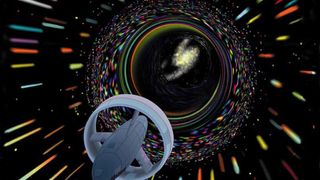
- What is a wormhole?
- Where wormholes exist
- How to find a wormhole
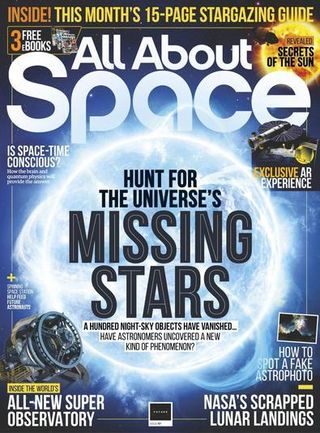
This article is brought to you by All About Space .
All About Space magazine takes you on an awe-inspiring journey through our solar system and beyond, from the amazing technology and spacecraft that enables humanity to venture into orbit, to the complexities of space science.
Wormholes — shortcuts in space and time — have long been a staple of science fiction. But some scientists believe we may soon be able to prove that they are a real part of the universe—as real as the sun and the stars or you and I. The scientific term for this exotic object is an Einstein-Rosen bridge, which is a clue as to where the idea came from.
Wormholes are rooted in Albert Einstein 's general theory of relativity — his groundbreaking masterpiece that turned our ideas about gravity on their head. For centuries we thought we knew how gravity worked, thanks to Isaac Newton . Apples fell to the ground, and Earth stayed in orbit around the sun because of a gravitational pull between the objects. Yet Einstein saw it differently, suggesting that what we experience as gravity is simply a bending of space and time. Under this radical new regime, Earth orbits the sun because our star's mass warps the space around it, much like a bowling ball would warp a bed sheet if it were placed in the center of it. Our planet is simply following the local curvature of this fabric, which Einstein called 'space-time'.
Such a crazy idea was in dire need of experimental evidence to back it up. Crucially, a solar eclipse in 1919 offered just such an opportunity. When the moon blocked out the sun, it was dark enough to see stars close by. Yet we don't see these stars where they really are because the sun's gravity bends their light on its way to us. Newton and Einstein's competing pictures of gravity predicted different amounts of bending, allowing us to see who was right. Einstein came out on top: Massive objects do indeed bend the space-time around them.
What is a wormhole? Space-time tunnels explained
Imagine space as a vast sheet of paper. You live at one end and you want to travel to the other end. Ordinarily you'd have to trudge across the entire length of the page to get there. But what if you folded the paper in half instead? Suddenly, where you are and where you want to be are right next to each other. You simply have to jump that tiny gap. We call these objects wormholes because it is like a worm trying to navigate its way around an apple. To get from the top to the bottom it has two choices: Crawl around the outside, or chew a shortcut through the middle.
Until recently our chances of finding these objects — if they even exist — were slim at best. But that changed in February 2016 when the scientists behind the LIGO (Laser Interferometer Gravitational-Wave Observatory) experiment announced the first-ever detection of gravitational waves . These are tiny ripples in the fabric of space-time, predicted by general relativity, which spread out through the universe much like ripples on a pond. "It was a game-changer," says Vitor Cardoso, a physicist at the University of Lisbon in Portugal.
Two black holes — each about 30 times more massive than the sun — had rammed into each other 1.3 billion years ago. Their violent crash sent a tsunami of gravitational waves roaring out through space-time, eventually reaching the LIGO instrument in September 2015.
Cardoso's research suggests that two colliding wormholes would produce a similar burst of gravitational waves. Excitingly, however, he says the resulting waves would be slightly different, allowing us to distinguish between black holes and wormholes.
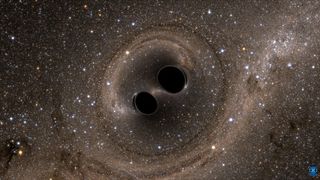
The key here is what's known as the 'ringdown '— the way in which the gravitational waves die away after the initial collision. It's similar to the way the sound of a ringing bell fades over time. "With two colliding wormholes you would see the ringdown—just like you see for black holes—but if your detector is very sensitive then seconds, or tens of seconds, after the main burst you would see something different," he says. This is due to the nature of black holes—gravitational Goliaths that swallow anything that gets too close. The ringdown of colliding black holes always gets quieter, quickly fading away to silence. But with colliding wormholes, after the silence you get an echo—a sudden, late signal as the gravitational waves bounce off the wormholes' surface. You can't get that with black holes as they swallow everything.
Unfortunately, LIGO currently isn't sensitive enough to pick up these late changes. However, researchers are upgrading LIGO's instruments, and it could be possible in "ten years from now or so," Cardoso says. Another exciting project on the horizon is the European Space Agency's ( ESA 's) Laser Interferometer Space Antenna (LISA). This is a gravitational-wave observatory in space that has a tentative launch date of 2034. However, in 2015 the ESA launched LISA Pathfinder—a test mission to develop certain key technologies that are vital for LISA's success. In April 2016, the ESA announced that LISA Pathfinder had indeed shown that LISA was feasible.
But ringdowns of collisions might not be the only route to finding a wormhole. Diego Rubiera-Garcia, Cardoso's former colleague at the University of Lisbon, has another idea. He's been studying what goes on deep inside a black hole. The conventional picture of black holes, as described by general relativity, has all the infalling mass squeezed down into an infinitely small, infinitely dense point—a singularity. "Any observer who approaches this point is destroyed," says Rubiera-Garcia. "After that you will disappear from space-time… there is nowhere else for you to go." It is at this singularity that general relativity breaks down—its equations stop making sense. This leaves many physicists confident that we need a new set of rules to replace general relativity in such an extreme environment.
And that's where wormholes come in. When Rubiera-Garcia applied one of the alternative sets of rules to the physics of black holes, the singularity disappeared, and the mathematics yielded a wormhole in its place. "Then it would be possible for an observer to go through this wormhole and cross to another region of the universe," he says. The trouble is that this shortcut through the cosmos might just be a phantom of the math: The alternative to general relativity that Rubiera-Garcia used to find it might not be how our universe really works. As with all good scientific theories, it needs to be tested, just as Einstein's was in 1919. That's where gravitational waves come back in.
Once we have built up a significant library of gravitational-wave detections, we can trawl through the data looking for departures from what general relativity predicts we should see. If these departures are found—and they match what the alternative theory predicts—it could signify that wormholes do indeed lurk inside black holes. The first detection of gravitational waves has ushered in a new era, one in which we may well find out that wormholes aren't just science fiction after all.
Where scientists think wormholes might exist
Center of the Milky Way
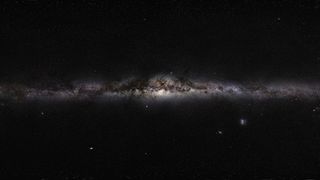
In 2015 Italian researchers suggested there could be a wormhole lurking in the center of the Milky Way some 27,000 light-years away. Ordinarily, a wormhole would need some exotic matter to keep it open, but researchers believe dark matter might be doing the job.
Quantum foam

Even empty space isn't truly empty—on the smallest scales it is a cauldron of bubbling energy popping in and out of existence. Some think fleeting virtual black holes may be being created all the time in this 'quantum foam'. However, we'd need a lot of energy if we wanted to make one permanent.
Inside a black hole

Rather than having a singularity at the center, as general relativity predicts, some researchers believe we'd find a wormhole. However, the jury is still out on whether it would be big enough for a human to traverse.
How do we know if we've found a wormhole?
Gravitational-wave ringdown echo
The gravitational waves from colliding black holes die away very quickly, but two colliding wormholes would produce an echo detectable with the next generation of experiments.
Microlensing

If a wormhole passed in front of a distant star, it would bend the star's light slightly in an event called 'microlensing'. This technique has already been used to find rogue planets.
Heading into one
Some scientists believe that black holes are actually wormholes in disguise. It's a risky endeavor, but sending something into one would let us know for certain if wormholes really do exist.
Follow us on Twitter @Spacedotcom or Facebook.
Join our Space Forums to keep talking space on the latest missions, night sky and more! And if you have a news tip, correction or comment, let us know at: [email protected].
Get the Space.com Newsletter
Breaking space news, the latest updates on rocket launches, skywatching events and more!
Colin Stuart is an award-winning astronomy author, speaker and tutor based in the UK. His popular science books have sold over 400,000 copies worldwide and have been translated into 21 languages. The asteroid (15347) Colinstuart is named after him and he runs an online Astrophysics for Beginners course and a science writing course .
China lands Chang'e 6 sample-return probe on far side of the moon, a lunar success (video)
Science and music festival Starmus VII is about to rock Bratislava with a stellar lineup
1st telescope removed from controversial astronomy hub on Hawaiian volcano
Most Popular
- 2 SpaceX congratulates Boeing, ULA on 1st crewed Starliner launch
- 3 What time is SpaceX's Starship Flight 4 launch test on June 6?
- 4 'They're going to test this thing from izzard to gizzard:' NASA hails success of Boeing's 1st Starliner astronaut launch
- 5 Boeing's Starliner launches astronauts for 1st time in historic liftoff (photos, video)
Into The Wormhole
Try travelling from your room to outer space through a wormhole! Walk a circle around the wormhole to see the rest of the room and make sure to take a look around when you’re inside.
If you want to know more about wormholes, watch our latest video!
Use WASD + mouse controls to move around on PC, and drag up, left and right to move forward and rotate on mobile devices. Side note: On some mobile devices and on PCs with certain GPUs the rendering might be rather grainy. If it happens to you: sorry about that!
Code by sirxemic. Prepared by Matt Caplan.
Click anywhere to continue
- Cast & crew
- User reviews

Interstellar
- When Earth becomes uninhabitable in the future, a farmer and ex-NASA pilot, Joseph Cooper, is tasked to pilot a spacecraft, along with a team of researchers, to find a new planet for humans.
- Earth's future has been riddled by disasters, famines, and droughts. There is only one way to ensure mankind's survival: Interstellar travel. A newly discovered wormhole in the far reaches of our solar system allows a team of astronauts to go where no man has gone before, a planet that may have the right environment to sustain human life. — ahmetkozan
- In the near future around the American Midwest, Cooper, an ex-science engineer and pilot, is tied to his farming land with his daughter Murph and son Tom. As devastating sandstorms ravage Earth's crops, the people of Earth realize their life here is coming to an end as food begins to run out. Eventually stumbling upon a N.A.S.A. base 6 hours from Cooper's home, he is asked to go on a daring mission with a few other scientists into a wormhole because of Cooper's scientific intellect and ability to pilot aircraft unlike the other crew members. In order to find a new home while Earth decays, Cooper must decide to either stay, or risk never seeing his children again in order to save the human race by finding another habitable planet. — jmvd8
- In Earth's future, a global crop blight and second Dust Bowl are slowly rendering the planet uninhabitable. Professor Brand, a brilliant N.A.S.A. physicist, is working on plans to save mankind by transporting Earth's population to a new home via a womhole. But first, Brand must send former N.A.S.A. pilot Cooper and a team of researchers through the wormhole and across the galaxy to find out which of three planets could be mankind's new home. — Jwelch5742
- A single father that flew for NASA in the past is raising a son and daughter along with his father-in-law. After NASA was cut from governmental funding due to environmental problems, he becomes a farmer. The last sustainable crop is corn and it's only a matter of time until that too becomes extinct. Mysterious clues begin emerging that he and his daughter believe are coming from a supernatural being, or aliens. What they decipher leads them to a mission where he leaves the planet and his family to save mankind. — liamguts
- In the future, crop blight has caused civilization to regress into a failing agrarian society. Former NASA pilot Cooper (Matthew McConaughey) runs a farm with his family. Humanity needs more farmers to feed the world & the current scientific thinking believes that NASA Apollo missions were faked to bankrupt the Soviets (a belief that pisses Cooper off like nothing else). Murphy (Mackenzie Foy), Cooper's 10-year-old daughter, believes her room is haunted by a ghost trying to communicate with her. They discover the "ghost" is an unknown intelligence sending coded messages using gravitational waves, leaving binary coordinates in the dust that direct them to a secret NASA installation led by Professor John Brand (Michael Caine). Dr Brand tells Cooper that every year one crop dies & gets eliminated from the planet forever due to change in climatic conditions & severity of the dust storms. Soon, no crop will ever grow on Earth & the species will starve to death. Brand reveals that a wormhole, apparently created by an alien intelligence (& first discovered 48 yrs ago), leads to new planets that may offer hope for survival. NASA's "Lazarus missions" have identified three potentially habitable worlds orbiting the black hole Gargantua: Miller, Edmunds, and Mann, named after the astronauts who surveyed them. Originally 12 astronauts were sent to 12 different worlds. Their craft had hibernation capabilities through which the astronauts could live on for decades & wait to be rescued after transmitting habitat data back to Earth. But if the planet was assessed to be uninhabitable, there was no plan for rescue as Earth did not have the resources to again visit all 12 planets. Brand recruits Cooper to pilot the spacecraft Endurance to recover the astronauts' data from the 3 planets; if one of the planets is habitable, humanity will follow on space stations. But Brand has still not solved the problem of lifting enough of Humanity into space & to the identified planet. So plan B is to population bomb the identified planet with human embryos. The Endurance will carry 5000 human embryos, of which 10 will be incubated & once they grow up, they will be artificially inseminated so as to create a colony of 100s of humans in a few decades. Cooper's departure devastates Murphy, and they part on bad terms. On Endurance, Cooper joins Brand's daughter, bio-technologist Amelia (Anne Hathaway) (& Brand's daughter); scientists Romilly (David Gyasi) and Doyle (Wes Bentley); and robots TARS and CASE. Amelia tells Cooper that Mann was the leader of the expedition that took 12 brave people to uncharted territory. Amelia has great respect for Mann. They enter the wormhole and head to Miller (as the meager data provided by the respective explorers puts Miller's planet as the best option), but discover the planet is so close to Gargantua that it experiences severe gravitational time dilation: each hour on the surface is seven years on Earth. A team descends to the planet, which proves inhospitable as it is covered by a shallow ocean roiled by enormous tidal waves. As Amelia attempts to recover Miller's data, a wave hits, killing Doyle and delaying the shuttle's departure. When the others return to Endurance, 23 years have passed. Murphy is now grown up & is working with Dr Brand (who is now very old) in solving the gravity equation that is the key to lifting the humanity off Earth in an attempt to recolonize another planet, as per Plan A. On Earth, the adult Murphy (Jessica Chastain) is now a NASA scientist assisting Brand with an equation that will enable NASA to launch the space stations via gravity. On his deathbed, Brand admits he already solved the gravity problem and determined that project is impossible as he needed more data from a black hole singularity to completely solve the equation. He concealed his findings to keep hope alive and put his faith in "Plan B": using frozen embryos aboard the Endurance to start humanity anew. He also knew that there was no way back to Earth via the wormhole. However, Murphy concludes that Brand's equation could work with additional data from a black hole's singularity. Low on fuel, Endurance can only visit one more planet before returning to Earth. After a tense vote, the team selects Mann's planet, as Mann is still transmitting. Amelia wanted to take Endurance to Edmund's planet as the data showed organic life, but Mann's data was more recent (but showed no organic life). Amelia's theory was that the 3 planets were orbiting a giant black hole & hence all accidents that happened in the universe to create life, simply did not happen in this system, so no asteroids, comets nothing. Her point was that planet showing organic life hence had more promise. However, they discover Mann's planet is icy and inhospitable; Mann (Matt Damon) always knew Plan B was the mission's true goal (he even tells Cooper that Brand knew that he needed a black hole's singularity data before Mann left Earth. And Singularity data is impossible as it hides behind a black hole, through which light itself cannot escape). Romily suggests that the robot TARS can enter the black hole horizon of Gargantuan fast enough & just might survive long enough to transmit data on the singularity. Mann faked data about his planet's viability so Endurance would rescue him. Mann breaks Cooper's spacesuit visor and leaves him to die, and flees to Endurance on a shuttle; Romilly is killed by a bomb Mann set to protect his secret. Amelia rescues Cooper on the other shuttle, and they arrive at Endurance in time to witness Mann docking improperly. The airlock explodes, killing Mann and causing serious damage, but Cooper uses the shuttle to get Endurance under control. Nearly out of fuel, Cooper and Amelia plan to slingshot Endurance around Gargantua on a course toward Edmunds. Due to being directly in the heavy gravity of Gargantua, several more decades actually pass back on Earth while TARS and Cooper detach into the black hole, sacrificing themselves to collect data on the singularity and to propel Amelia by dropping the ship's mass. They emerge in an extra-dimensional "tesseract", where time appears as a spatial dimension and portals show glimpses of Murphy's childhood bedroom at various times. Cooper realizes the alien beings are future humans who have constructed this space so he can communicate with Murphy and save humanity. Using gravitational waves, Cooper encodes TARS's data on the singularity into the adult Murphy's watch, allowing her to solve Brand's equation and evacuate Earth. Cooper somehow is ejected from the singularity & awakens aboard a NASA space station near Saturn and reunites with the now elderly Murphy (Ellen Burstyn), who has led humanity's exodus. Murphy convinces Cooper to search for Amelia and CASE, who have completed their one-way trip to Edmunds' planet, and are setting Plan B into motion.
Contribute to this page
- IMDb Answers: Help fill gaps in our data
- Learn more about contributing
More from this title
More to explore, recently viewed.
- High Contrast
- Museum Store
- Buy Tickets
Interstellar
Laser IMAX® 2D | PG-13 | 169 min. | Adventure, Drama, Sci-fi
Don't miss the next Bullock film!
Sign up for news about upcoming films at the Bullock Museum. Please check your email to complete the signup process.
Screens April 21 – 23 & April 28 – 30, 2023
Relive the epic sci-fi film in immersive surround sound for a limited time only.
A team of explorers travel through a wormhole in space in an attempt to ensure humanity's survival. Partially filmed with IMAX cameras, Interstellar was specifically shot by Christopher Nolan to be experienced on the giant screen. Don't miss the return of this unforgettable film to a screen the size of Texas, only at the Bullock Museum.
The IMAX Theatre is thoroughly cleaned daily. Read our FAQs to learn more.
Your ticket purchase supports the Bullock Museum's exhibitions and educational programming.
assistive listening audio description closed caption
Rating: PG-13 Starring: Ellen Burstyn , Matthew McConaughey , Timothée Chalamet , Anne Hathaway Director: Christopher Nolan Runtime: 169 min Genre: Adventure, Drama, Sci-fi Release year: 2014
The Bullock Museum IMAX® Theatre is the first and only Laser IMAX theater in Texas and features enhanced 12-channel immersive audio and luxury seating. Enjoy concessions such as specialty popcorn, assorted candies, and beverages, including sodas and bottled water.
Learn about ticket prices, refund policies, and parking (free after 5 pm). Please note that visitors under age fifteen must be accompanied by someone age sixteen or older.
IMAX Theatre seating is on a first-come-first-serve basis.
Museum Members enjoy free unlimited IMAX documentary films, discounts on feature film tickets, free exhibition admission, discounts in the Museum Store, and more. Learn More .
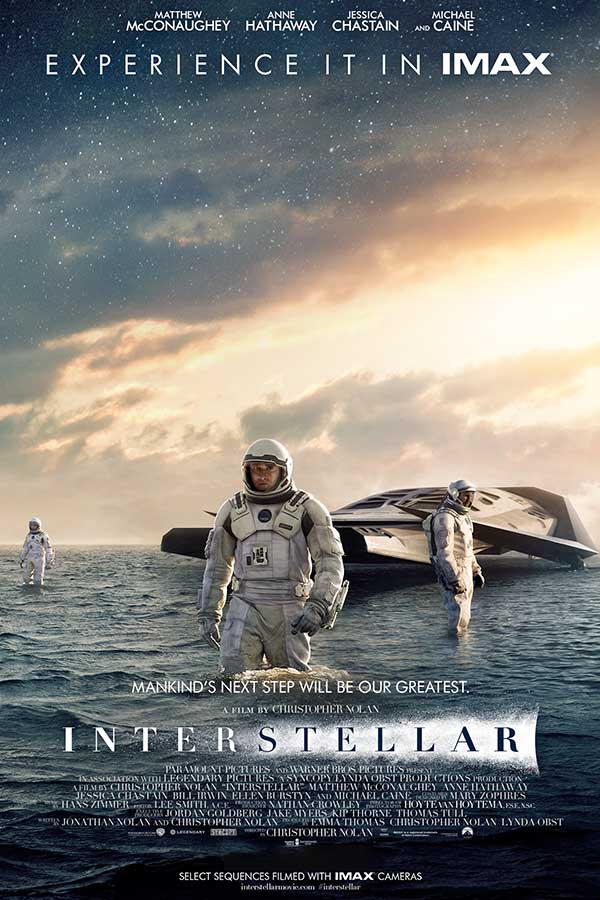
You are using an outdated browser. Please upgrade your browser to improve your experience.
Science on Screen
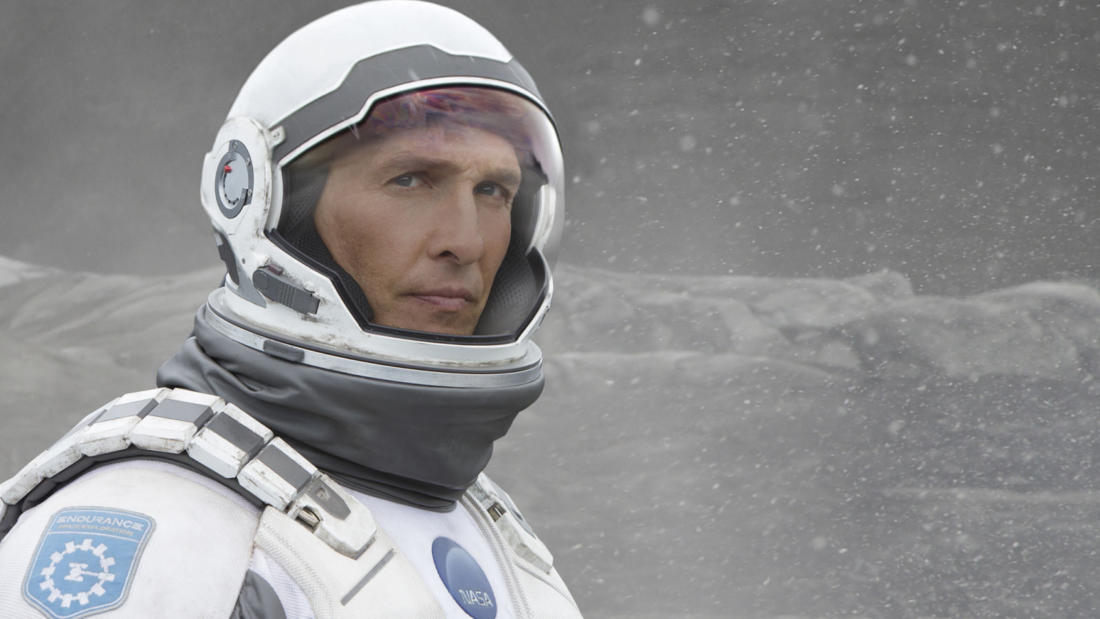
Gateway Film Center Columbus, OH
Samir D. Mathur
Professor of Physics, The Ohio State University
David H. Weinberg
Chair of the Astronomy Department, The Ohio State University
Interstellar— Wormholes and theories of interstellar travel
Program description.
Theoretical physicist Samir Mathur and astronomer David Weinberg in conversation about the film and its science.

Presented At
Film synopsis.
A team of explorers travel through a wormhole in space in an attempt to ensure humanity's survival.
In Earth's future, a global crop blight and second Dust Bowl are slowly rendering the planet uninhabitable. Professor Brand (Michael Caine), a brilliant NASA physicist, is working on plans to save mankind by transporting Earth's population to a new home via a wormhole. But first, Brand must send former NASA pilot Cooper (Matthew McConaughey) and a team of researchers through the wormhole and across the galaxy to find out which of three planets could be mankind's new home.
Photo courtesy of PHOTOFEST
Letterboxd — Your life in film
Forgotten username or password ?
- Start a new list…
- Add all films to a list…
- Add all films to watchlist
Add to your films…
Press Tab to complete, Enter to create
A moderator has locked this field.
Add to lists

Where to watch
Interstellar: desgornia's cut, mankind was born on earth. it was never meant to die here.
A team of explorers travel through a wormhole in space in an attempt to ensure humanity's survival.
105 mins More at TMDb Report this page
Select your preferred poster
share this!
April 15, 2019
Travel through wormholes is possible, but slow
by American Institute of Physics
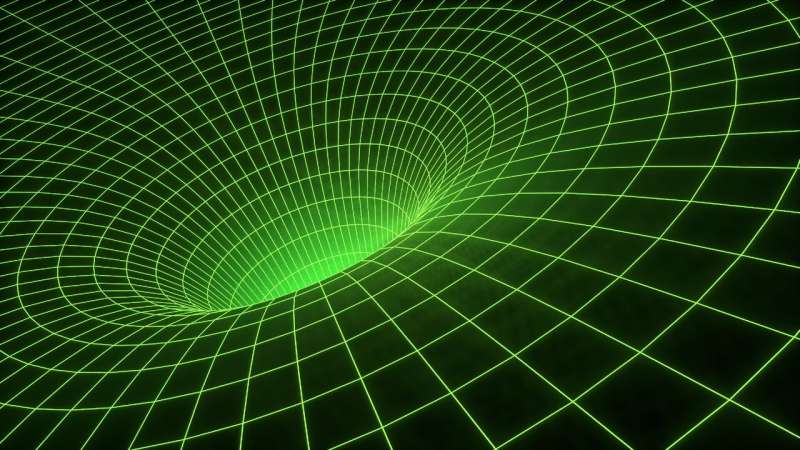
A Harvard physicist has shown that wormholes can exist: tunnels in curved space-time, connecting two distant places, through which travel is possible.
But don't pack your bags for a trip to other side of the galaxy yet; although it's theoretically possible, it's not useful for humans to travel through, said the author of the study, Daniel Jafferis, from Harvard University, written in collaboration with Ping Gao, also from Harvard and Aron Wall from Stanford University.
"It takes longer to get through these wormholes than to go directly, so they are not very useful for space travel ," Jafferis said. He will present his findings at the 2019 American Physical Society April Meeting in Denver.
Despite his pessimism for pan-galactic travel, he said that finding a way to construct a wormhole through which light could travel was a boost in the quest to develop a theory of quantum gravity.
"The real import of this work is in its relation to the black hole information problem and the connections between gravity and quantum mechanics ," Jafferis said.
The new theory was inspired when Jafferis began thinking about two black holes that were entangled on a quantum level, as formulated in the ER=EPR correspondence by Juan Maldacena from the Institute for Advanced Study and Lenny Susskind from Stanford. Although this means the direct connection between the black holes is shorter than the wormhole connection—and therefore the wormhole travel is not a shortcut—the theory gives new insights into quantum mechanics.
"From the outside perspective, travel through the wormhole is equivalent to quantum teleportation using entangled black holes," Jafferis said.
Jafferis based his theory on a setup first devised by Einstein and Rosen in 1935, consisting of a connection between two black holes (the term wormhole was coined in 1957). Because the wormhole is traversable, Jafferis said, it was a special case in which information could be extracted from a black hole.
"It gives a causal probe of regions that would otherwise have been behind a horizon, a window to the experience of an observer inside a spacetime, that is accessible from the outside," said Jafferis.
To date, a major stumbling block in formulating traversable wormholes has been the need for negative energy, which seemed to be inconsistent with quantum gravity. However, Jafferis has overcome this using quantum field theory tools, calculating quantum effects similar to the Casimir effect.
"I think it will teach us deep things about the gauge/gravity correspondence, quantum gravity, and even perhaps a new way to formulate quantum mechanics," Jafferis said.
Provided by American Institute of Physics
Explore further
Feedback to editors

A novel spray device helps researchers capture fast-moving cell processes
10 minutes ago

Tropical forests adjust strategies to thrive even when soils are nutrient poor, large field experiment shows
21 minutes ago

Boeing's astronaut capsule arrives at the space station after thruster trouble
42 minutes ago

New material records mechanical stress through luminescence

Computer model demonstrates desire for social proximity improves flight routes among pigeons
52 minutes ago

Schooling fish expend less energy in turbulent water compared to solitary swimmers, study finds

JWST discovers large variety of carbon-rich gases that serve as ingredients for future planets around very low-mass star

Scientists develop fatigue-free ferroelectric material

Fish out of water: How killifish embryos adapt their development

The first example of cellular origami discovered in protist
Relevant physicsforums posts, list of verdet constants.
May 31, 2024
Discussion about least squares method
May 29, 2024
Does energy exist?
Calculating vacuum -- these numbers do not make sense.
May 25, 2024
Replacing the Measurement standards (SI units)
May 24, 2024
What drives osmosis? (Statistics or Dynamics?)
May 20, 2024
More from Other Physics Topics
Related Stories

Scientists dismiss the idea of travel through wormholes
Dec 14, 2018

Physicist describes the shape of a wormhole
Oct 17, 2018

'Spooky action' builds a wormhole between 'entangled' quantum particles
Dec 3, 2013
Escaping gravity's clutches: The black hole breakout
Aug 11, 2011

Creation of entanglement simultaneously gives rise to a wormhole
Dec 5, 2013

Listening to quantum radio
Mar 8, 2019
Recommended for you

Exotic black holes could be a byproduct of dark matter
2 hours ago

Physics collaboration pushes an information engine to its limits

Study suggests germanium isotope really does have an 11-day half-life
23 hours ago

AI-powered jet origin identification technology opens new horizons in high-energy physics research
Jun 5, 2024

New model suggests partner anti-universe could explain accelerated expansion without the need for dark energy
Jun 4, 2024

Physicists decode mechanics of knitted materials for engineering applications
Let us know if there is a problem with our content.
Use this form if you have come across a typo, inaccuracy or would like to send an edit request for the content on this page. For general inquiries, please use our contact form . For general feedback, use the public comments section below (please adhere to guidelines ).
Please select the most appropriate category to facilitate processing of your request
Thank you for taking time to provide your feedback to the editors.
Your feedback is important to us. However, we do not guarantee individual replies due to the high volume of messages.
E-mail the story
Your email address is used only to let the recipient know who sent the email. Neither your address nor the recipient's address will be used for any other purpose. The information you enter will appear in your e-mail message and is not retained by Phys.org in any form.
Newsletter sign up
Get weekly and/or daily updates delivered to your inbox. You can unsubscribe at any time and we'll never share your details to third parties.
More information Privacy policy
Donate and enjoy an ad-free experience
We keep our content available to everyone. Consider supporting Science X's mission by getting a premium account.
E-mail newsletter

IMAGES
VIDEO
COMMENTS
Interstellar: Directed by Christopher Nolan. With Ellen Burstyn, Matthew McConaughey, Mackenzie Foy, John Lithgow. A team of explorers travel through a wormhole in space in an attempt to ensure humanity's survival.
In a 1987 paper about travel via wormhole, he notes that the throat of a Kerr wormhole contains a region called a Cauchy horizon that is very unstable. The math says that as soon as anything, even ...
A team of explorers travel through a wormhole in space in an attempt to ensure humanity's survival. Plot [] To be added. Cast [] Main Cast [] Matthew McConaughey as Joseph Cooper; Anne Hathaway as Amelia Brand; Jessica Chastain as Murphy Cooper. Ellen Burstyn as Murphy Cooper (older) Mackenzie Foy as Murphy Cooper (10 years old) John Lithgow as ...
Cast. Matthew McConaughey. Anne Hathaway. Jessica Chastain. Michael Caine. A team of explorers travel through a wormhole in space in an attempt to ensure humanity's survival. In Earth's future, a global crop blight and second Dust Bowl are slowly rendering the planet uninhabitable. Professor Brand (Michael Caine), a brilliant NASA physicist, is ...
Cooper steers the pioneers' ship, called Endurance, through the wormhole into a planet-rich portion of a faraway galaxy. Though wormholes are a favored sci-fi trope, nobody knows whether or not ...
An artist's image of a hypothetical spacecraft that could be used to travel through a wormhole. ... If an explorer went back in time and killed his or her grandfather, that person could not be ...
Wormholes could offer a path to the most distant places in the universe. Wormholes make the best shortcuts in the universe. That's true in a literal sense, since the theoretical things can ...
Sagan wanted to feature wormholes in the novel, so asked his friend Kip Thorne to look at wormhole solutions to Einstein's equations. Shortly after, Thorne proposed the idea of a traversable wormhole that would allow an explorer to travel through a wormhole in both directions from one part of the universe to another very quickly.
Interstellar, the new sci-fi film by Christopher Nolan, chronicles the adventures of a group of scientist explorers who use newly discovered wormholes to travel through different dimensions and ...
An astrophysicist explains these shortcuts through space-time. The term wormhole was coined in 1957 by American physicist John Wheeler. He named them after the literal holes worms leave behind in ...
In 2015 Italian researchers suggested there could be a wormhole lurking in the center of the Milky Way some 27,000 light-years away. Ordinarily, a wormhole would need some exotic matter to keep it ...
A team of explorers travel through a wormhole in space in an attempt to ensure humanity's survival. Director : Christopher Nolan. Starring : Jessica Chastain, John Lithgow, Ellen Burstyn, Anne Hathaway, Casey Affleck, Matthew McConaughey. Release Date : 08 Jul 2023.
Into The Wormhole. Try travelling from your room to outer space through a wormhole! Walk a circle around the wormhole to see the rest of the room and make sure to take a look around when you're inside. If you want to know more about wormholes, watch our latest video! Controls
A team of explorers travel through a wormhole in space in an attempt to ensure humanity's survival. Directed by: Christopher Nolan DP: Hoyte Van Hoytema. A team of explorers travel through a wormhole in space in an attempt to ensure humanity's survival.
Brand reveals that a wormhole, apparently created by an alien intelligence (& first discovered 48 yrs ago), leads to new planets that may offer hope for survival. NASA's "Lazarus missions" have identified three potentially habitable worlds orbiting the black hole Gargantua: Miller, Edmunds, and Mann, named after the astronauts who surveyed them.
As Jafferis explained in an AIP press statement, "It takes longer to get through these wormholes than to go directly, so they are not very useful for space travel." Basically, the results of their analysis showed that a direct connection between black holes is shorter than that of a wormhole connection. While this certainly sounds like bad news ...
A team of explorers travel through a wormhole in space in an attempt to ensure humanity's survival. Films; About; Spotlight; Now Showing; Contact; Films; About; Spotlight; Now Showing; Contact; Interstellar. Director: Christopher Nolan. Cast: Matthew McConaughey, Anne Hathaway, Jessica Chastain . A team of explorers travel through a wormhole in ...
A team of explorers travel through a wormhole in space in an attempt to ensure humanity's survival. Partially filmed with IMAX cameras, Interstellar was specifically shot by Christopher Nolan to be experienced on the giant screen. Don't miss the return of this unforgettable film to a screen the size of Texas, only at the Bullock Museum.
A team of explorers travel through a wormhole in space in an attempt to ensure humanity's survival. In Earth's future, a global crop blight and second Dust Bowl are slowly rendering the planet uninhabitable. Professor Brand (Michael Caine), a brilliant NASA physicist, is working on plans to save mankind by transporting Earth's population to a ...
Synopsis. MANKIND WAS BORN ON EARTH. IT WAS NEVER MEANT TO DIE HERE. A team of explorers travel through a wormhole in space in an attempt to ensure humanity's survival. Details. Language. English. 105 mins More at TMDb. Share.
Credit: CC0 Public Domain. A Harvard physicist has shown that wormholes can exist: tunnels in curved space-time, connecting two distant places, through which travel is possible. But don't pack ...
A wormhole is a hypothetical structure connecting disparate points in spacetime, and is based on a special solution of the Einstein field equations. [1] A wormhole can be visualized as a tunnel with two ends at separate points in spacetime (i.e., different locations, different points in time, or both). Wormholes are consistent with the general ...
A team of explorers travel through a wormhole in space to find a new planet for humans. #Interstellar #Hollywood #HollywoodMovie #DubaiOneTv We need a pilot and this is the mission that you were trained for.